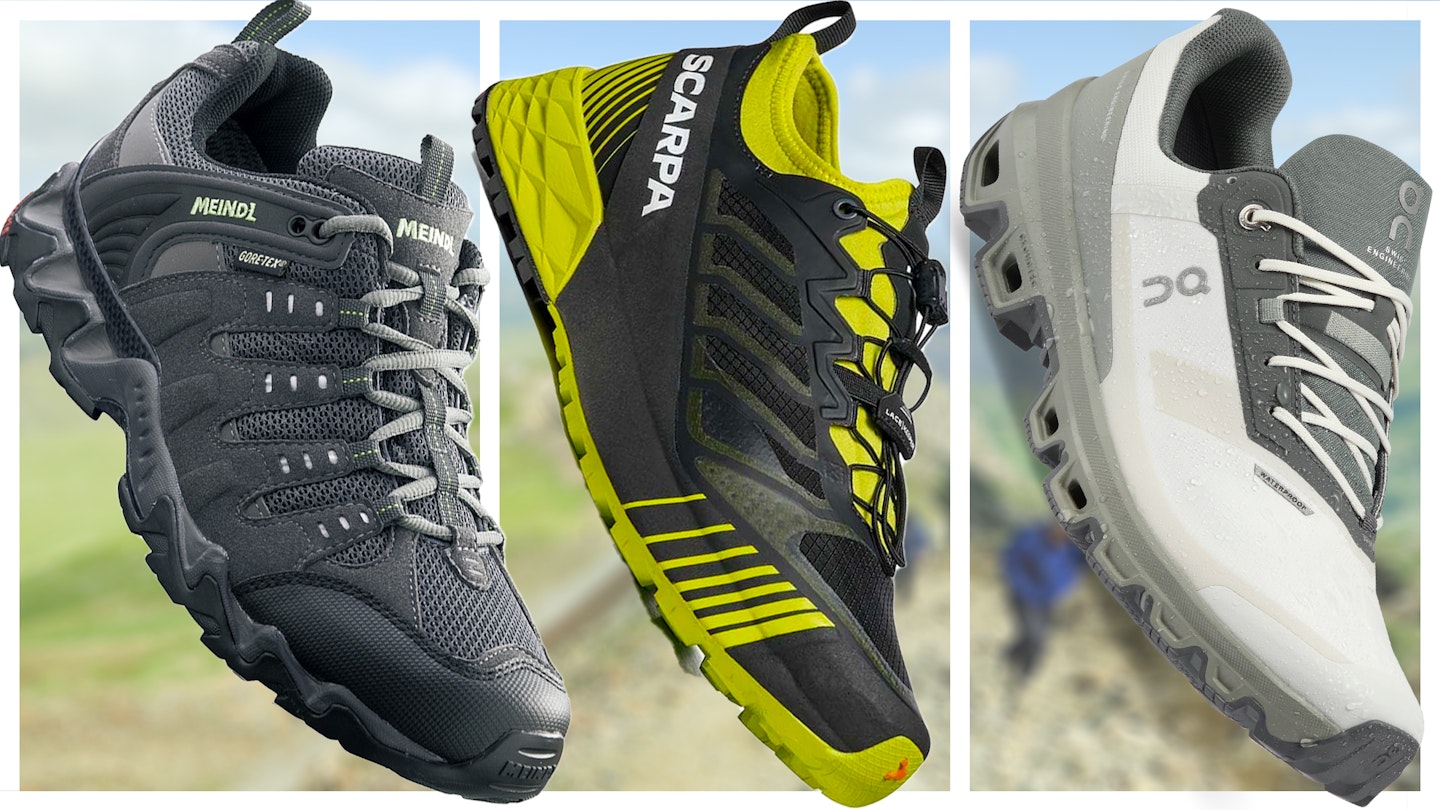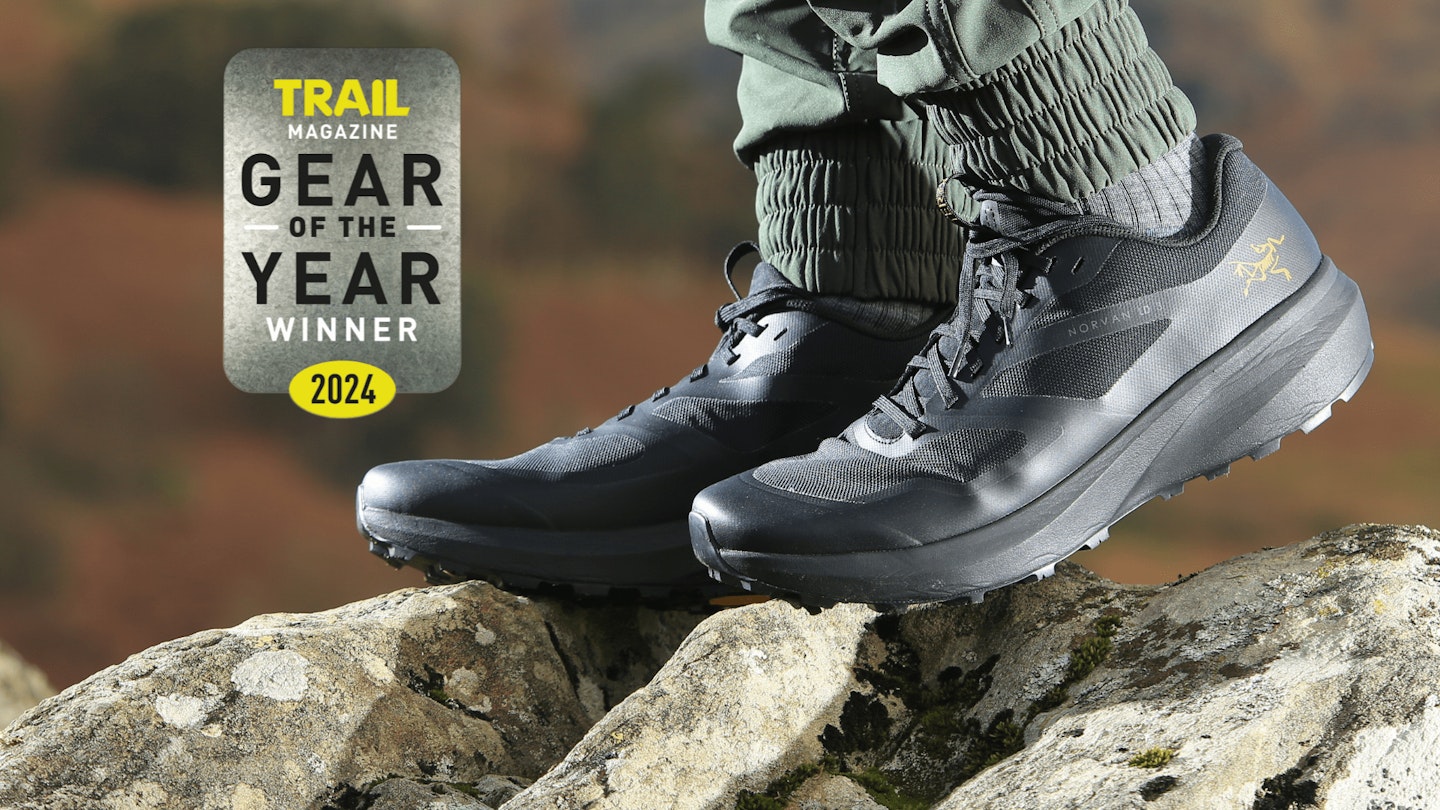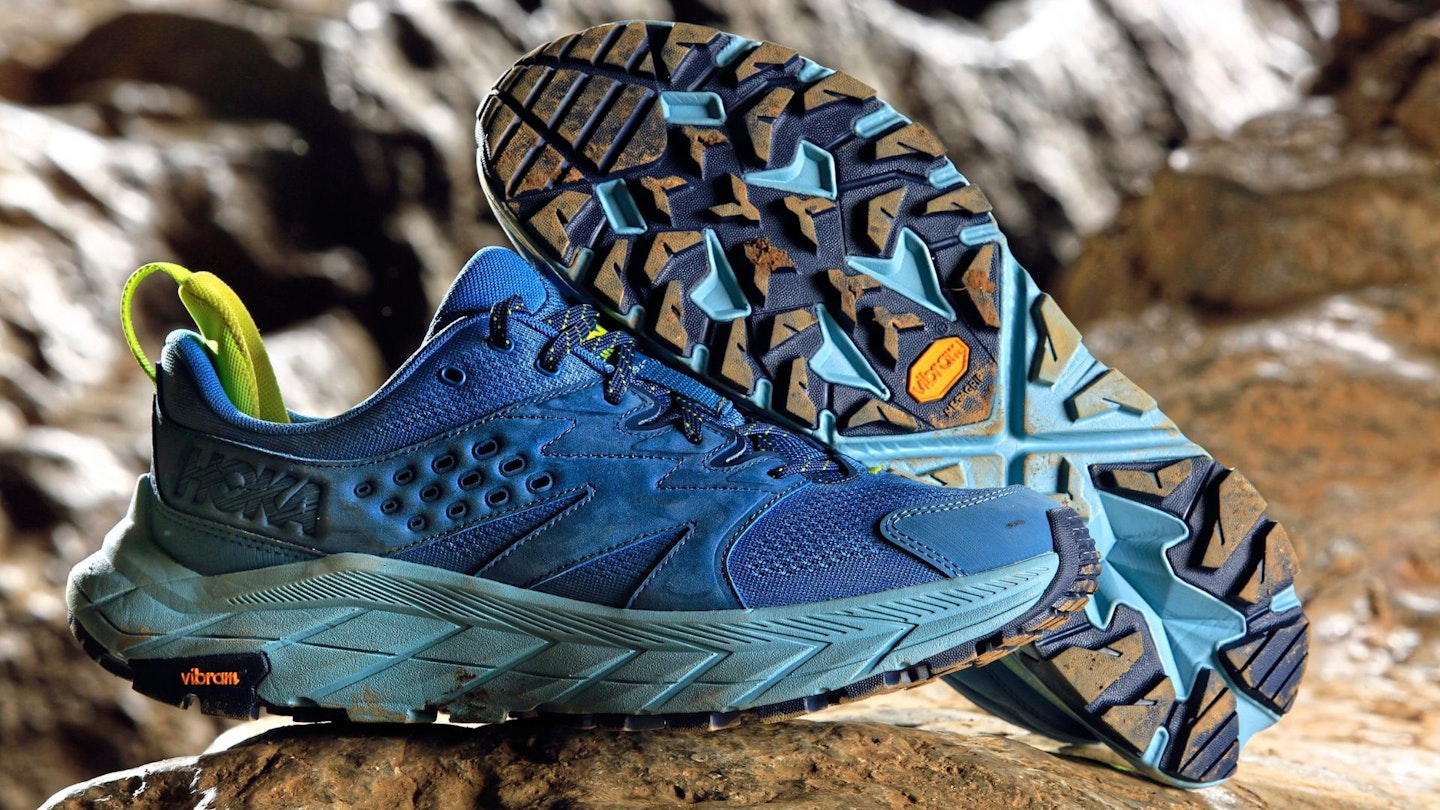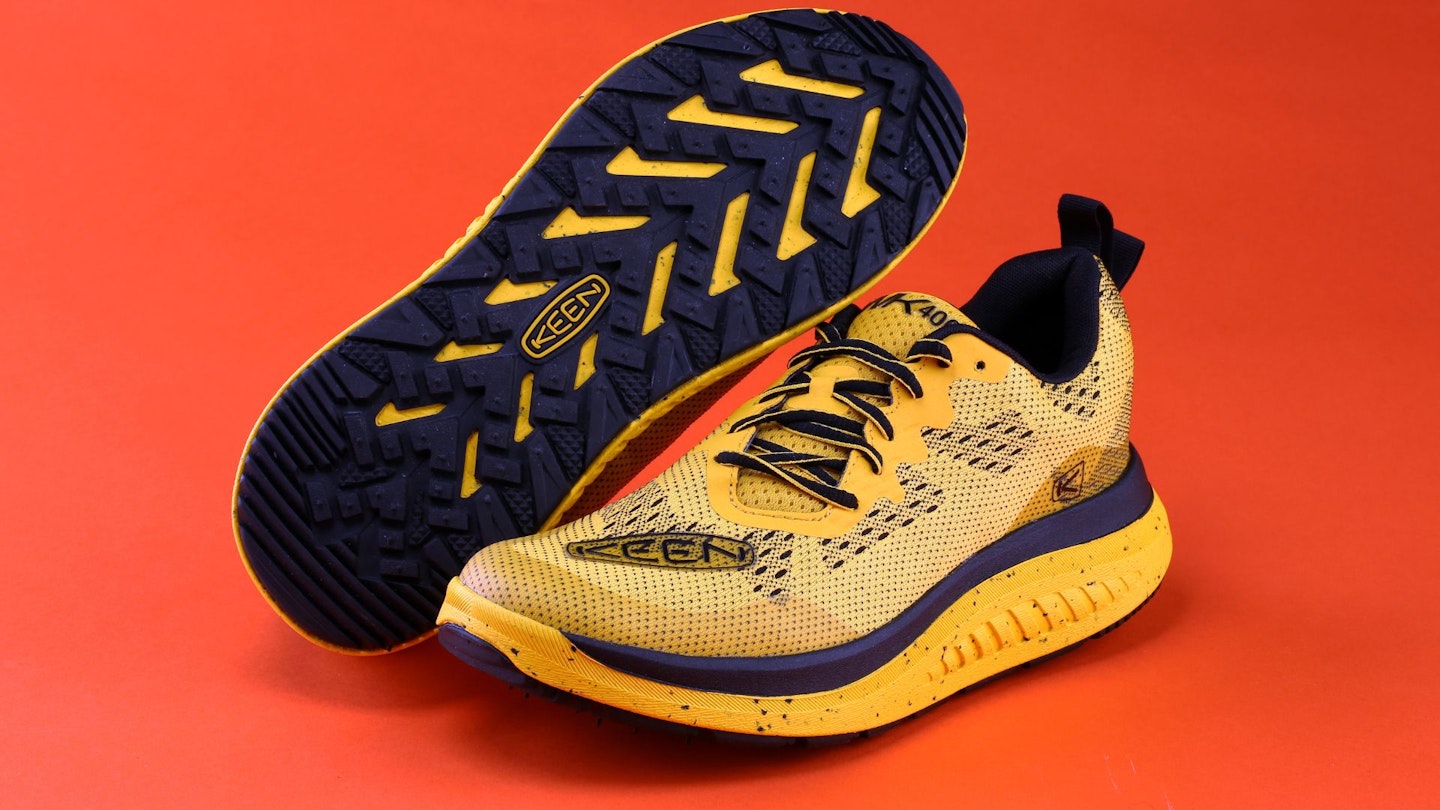Sturdy high-ankle walking boots or trainer-like hiking shoes – which are best in the mountains? This question has become one of the great gear debates of modern times. Truthfully, with impressive strengths on each side, the answer will always depend on what you're looking for.
Obviously, the major advantage of going for hiking shoes over boots is their lighter weight. This makes even more sense in the prime hiking seasons, from late spring through to early autumn. Experienced hillwalkers often ditch their heavier gear for minimalist options once winter starts winding down. Once the sun's out, even super breathable lightweight walking boots aren't immune to overheating. And nobody wants hot feet!
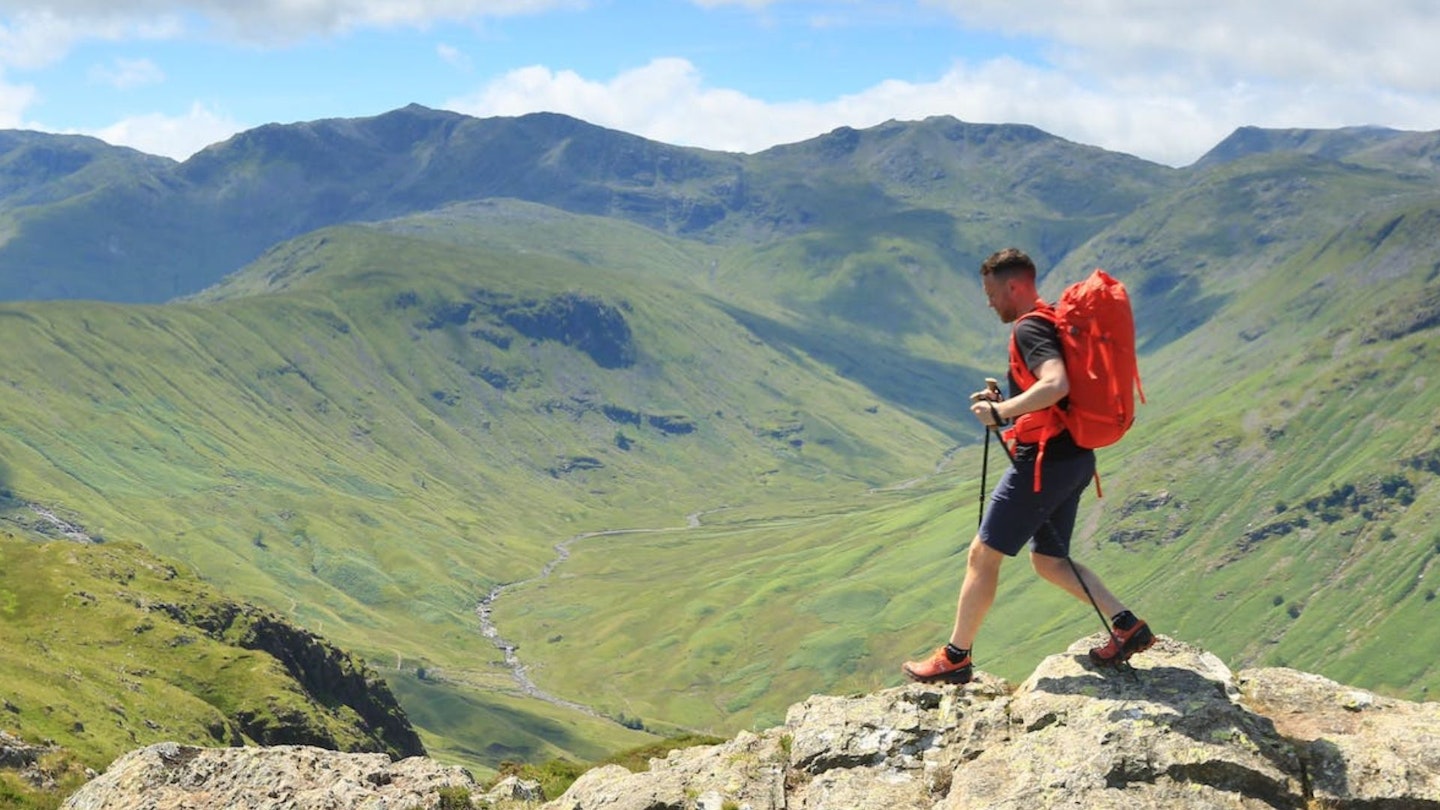
Another oft-quoted bit of walkers’ wisdom – ‘One pound on your feet equals five pounds on your back’. This rule of thumb was (supposedly) developed by Sir Edmund Hillary and fellow climbers training for the 1953 Everest expedition. It’s a sage bit of advice, still repeated by some of the greatest exponents of ‘fast and light’ backpacking.
What are the best hiking shoes of 2024?
Gear of the Year 2024 Winner: Arc'teryx Norvan LD3
Best for comfort: Hoka Ancapa Breeze Lo - view offer on Hoka
Best Value: Keen WK400
If you're attracted to the idea of being a bit swifter and more agile in the hills, you've come to the right place. We've selected those that struck the best balance between comfort, support, cushioning, weight and grip – while also presenting something for everyone. So, there are stiffer, more technical approach shoes for hillwalkers who love rocky scrambles, plus a few lightweight, trainer-inspired hiking shoes that promise instant out-of-the-box comfort – perfect for fast-paced hill-bagging.
The best hiking shoes reviewed:
Another trail running trainer that hits all the right notes as a hiking shoe, the Norvan LD3 is ultra-light, grippy, comfortable and supportive – a lovely balancing act between competing priorities.
Other than the outrageously springy Keen WK400, it's the second most cushioned shoe in our round-up, with its InFuse midsole providing active rebound, good shock absorption and plush cushioning. Yet the Norvan LD3 isn't so highly stacked and squidgy that you lose your sense of connection to and feel for the trail. Some waterproofing is sacrificed for all the plush cushioning, but this is easily remedied by pairing the shoes with some quality, waterproof walking socks.
It's easily the lightest shoe on test too (at 268g, it's 46g lighter per shoe than the Scarpa Ribelle Run, the second lightest), meaning you feel somewhat weightless and free on-trail. The upper is made from a soft and flexible mesh, ensuring the shoe is air-permeable and quick-drying, while more durable upper inserts, a wraparound rand, stiffened toe cap, and well-designed heel cup add all the toughness you need for gnarly terrain.
The ankle cuff is soft and forgiving, and the tongue is connected to a stretchy sock-like inner for a comfy fit. The Vibram outsole is sticky, and we particularly loved the way the wide toe box allows your toes to splay – something that's crucial for avoiding blisters on long-distance walks.
Check out the women's version here
Read our full Arc'teryx Norvan LD 3 Shoe review
Pros
- Super lightweight
- Immediate comfort
- Excellent cushioning
- Good grip
- Highly breathable
Cons
- Not as durable as some heavier hiking shoes
These hiking shoes are unique, bold and succeed in their singular aim: comfort. While they aren't our first choice for super-technical scrambling, the Hoka Anacapa Breeze Low still performs very well and certainly wouldn't let you down if you strayed from the beaten path.
But, truly, the beaten path is where these shoes belong. The Anacapa Breeze low is designed to keep your feet supported and safe over multiple solid days of trekking and to stay in one piece by the end. For their excellence in long-distance trekking, the are former Gear of the Year award-winners.
The compression moulded EVA foam midsole combines elegantly with Hoka's unique Hubble heel® technology. The idea is to gently catch your step, soften the foot strike, and smoothly transition (or 'rock') you onto your forefoot. All the while, the thick rubber outsole handily absorbs any bumps or rocks as you walk. An ideal tool for a long day on the trails.
Along with the plush cushioning, the Anacapa Breeze Low has a pleasantly breathable upper made from 100% recycled yarns. Earning bonus sustainability points is the liner, which is made from 50% soy-based material.
Check out the women's version here
Read our full Hoka Anacapa Breeze Low review
Pros
- Immaculate cushioning
- Innovative geometry in construction
- Durable for ultra-long distances
Cons
- Heel shape isn't for everyone
- Loud style isn't for everyone
3.
Keen WK400
This new-for-2023 shoe polarises opinion. Some hikers adore it, others despise it – as evidenced by online reviews of both adulation and derision. Fans are waxing lyrical with lines like "by far the best walking shoe ever" and "a completely refreshing experience". Meanwhile, critics are launching scathing complaints about the "ugly with an uncomfortable arch" and "strange fit". One particularly riled-up customer even said the Keen WK400 was "like walking in high heels".
This is, therefore, the shoe version of Marmite – you'll either love it or hate it, and the only way to find out is to give it a go.
The good news is we absolutely loved it. Initially, we found the shoes felt very peculiar, with an unexpected 'hump' of material underneath the foot arch and heel – but we soon got used to it, and it's precisely this underfoot curve geometry (known as Keen. Curve technology) that makes the WK400 so special.
It gives you awesome forward momentum with a smooth, rolling feel to each step and delivers superb cushioning and a high-energy return – it really is like nothing we've walked in before. In theory, this approach is designed for lower-level, flatter terrain, but we wore the WK400 up Yewbarrow's scrambly Great Door ascent and thoroughly enjoyed the trip.
Check out the women's version here
Read our full Keen WK400 review
Pros
- Plush, unique midsole
- Superb energy return
- Lovely 'ride' to each step
Cons
- Outlandish design
- Not suited to very rugged, technical terrain
Best women's hiking shoe
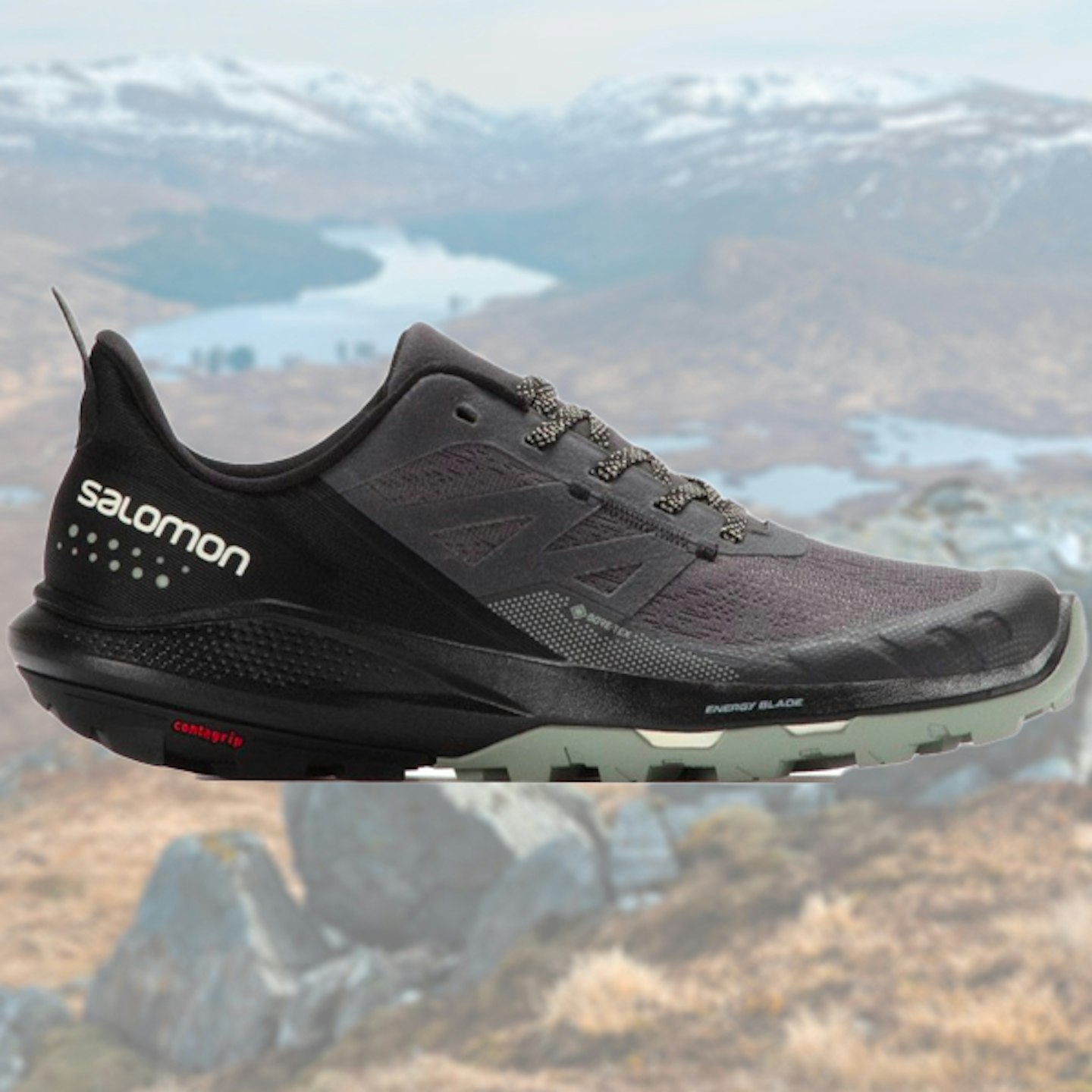
www.sportsshoes.com
The Outpulse is a very capable lightweight option pitched at 'fast and light' hikers who like to move unencumbered in the mountains.
Incorporating features borrowed from Salomon's trail running footwear, they feature an 'Energy Blade' TPU plate in the midsole, which provides springiness and support for flexibility and protection underfoot. A pronounced rocker and ample cushioning from super-soft Fuze Surge foam (made from 30% natural rubber) adds extra responsiveness.
However, despite their low profile and lightweight build, these shoes do not feel minimalist. Luxuriously soft padding around the cuff and tongue makes for exceptional out-of-the-box comfort. There are pronounced cutaways around the ankle bone for full freedom of movement, with a built-up heel section for good Achilles support and protection.
Ellie really liked the trainer-like fit. We'd describe them as a low-volume shoe with a neat toe box – though the knit fabric does crease easily, which made us wonder about long-term durability.
That aside, there was little to fault. The Gore-Tex liner did its job without feeling too hot or sweaty, the eyelet lacing gave a snug and secure fit, and the All Terrain Contagrip sole – a compound normally known for hard-wearing durability rather than outstanding traction – outperformed expectations. It's also worth noting that these shoes come in an unusually wide range of sizes for both men and women.
Check out the men's version here
Pros
- Snug trainer-like fit
- Soft padding around cuff and tongue
- Good breathability
Cons
- Not the most durable hiking shoe
Best rugged hiking shoe
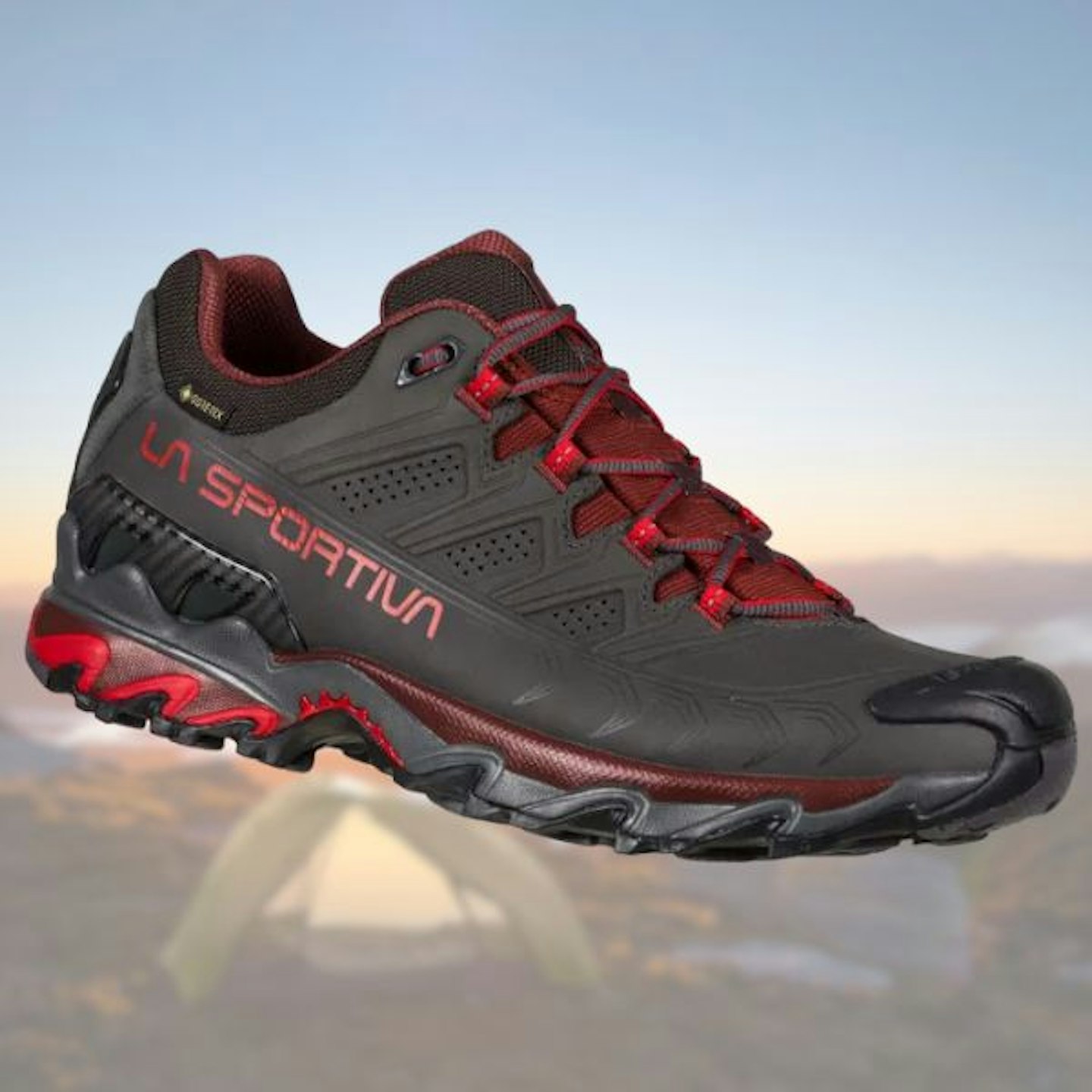
www.alpinetrek.co.uk
This is a La Sportiva classic that, with a few tweaks and the use of additional fabrics, now offers even more to hikers – it's muscular, protective and firm.
The La Sportiva Ultra Raptor II has long been used as a running/approach crossover shoe, and the leather GTX version makes the Raptor even more hiking-appropriate. The Nubuck upper has added anti-abrasion reinforcement, while inside, there's a Gore-Tex Extended Comfort membrane.
The Memlex EVA midsole cushions on hard surfaces, and an anti-torsion TPU insert, and rear stabilising heel insert provides lateral stability. La Sportiva's FriXion Blue rubber outsole is durable and grippy for traction on a range of surfaces, while the toe cap offers good impact protection.
It's a great design for long distances and mountain trails. Though, of course, for shorter or faster outings, there are better options.
Check out the women's version here
Pros
- Extremely protective
- Stable and rigid construction
- Wide fit available
Cons
- There are better options for speedy hiking
Best lightweight hiking shoe
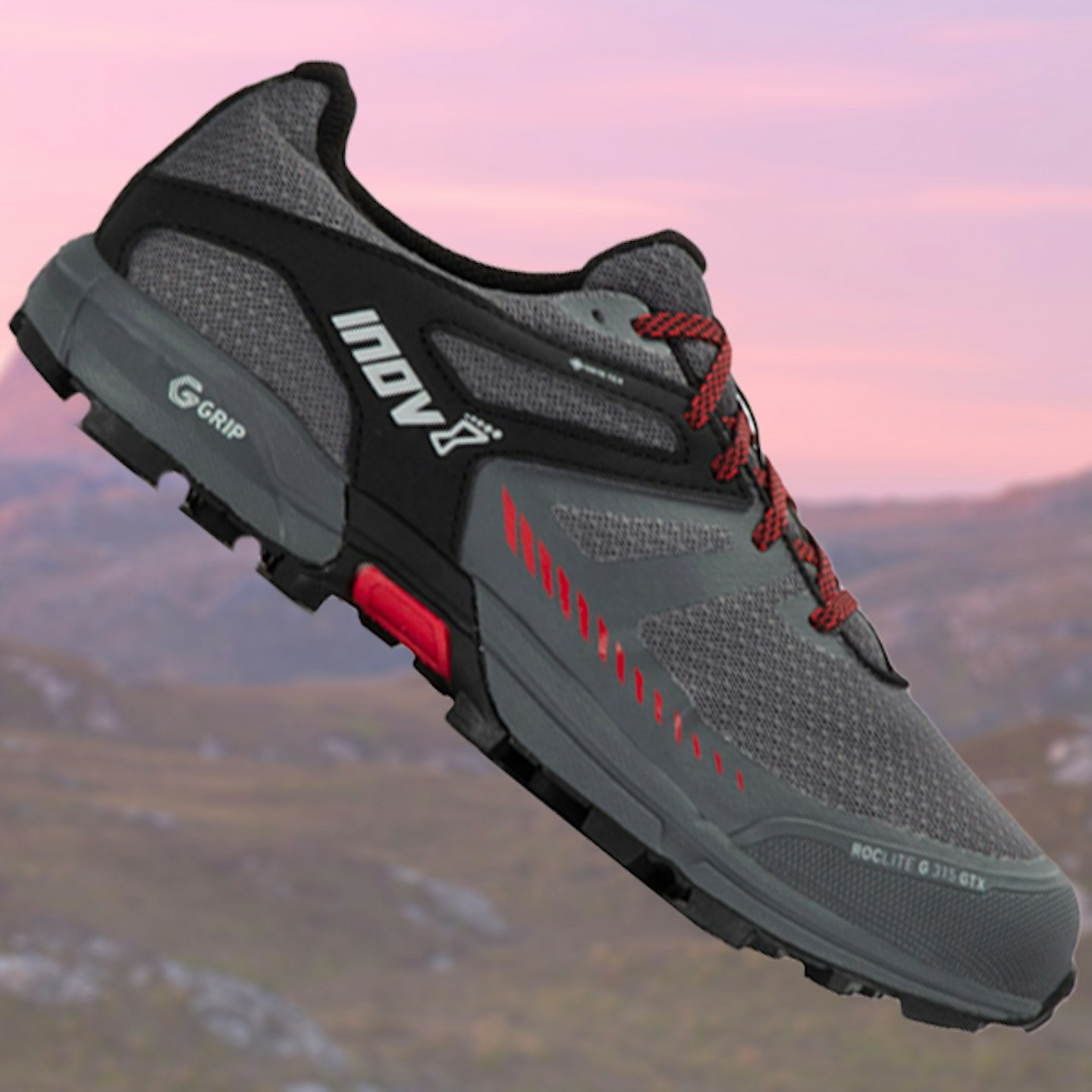
www.inov-8.com
Lake District-based brand Inov-8 is much-loved amongst the fell-running community for its super-grippy trail shoes, but it also makes specialist hiking footwear with similarly impressive outsole traction.
The Roclite G 315 GTX V2 – a second generation, 2023 update to one of the brand's bestsellers – probably offers the stickiest, grippiest outsole in our round-up, thanks to the 6mm-deep, aggressively-patterned, chevron-like lugs. These rubber compounds are infused with graphene – a type of carbon billed as the world's strong material – to deliver what Inov-8 claims is "the ultimate in tough grip".
In our test hikes, it certainly hit the spot. The shoe's synthetic upper feels pretty tough, and underneath it is a Gore-Tex liner to keep your feet dry. The midsole features Inov-8's Powerflow Max foam and its Meta-Plate shank. Cushioning is moderate but not plush (for max cushioning, see Inov-8's Ultra G 280 or TrailFly G 270 V2), but the plus side is an excellent balance between stability, protection and energy return.
The G 315 feels fast, light and agile, yet you can still feel the trail underfoot and trust in this shoe's support on rocky, technical ground. Comfort levels are pretty high, and all-round performance is impressive.
Check out the women's version here
Pros
- Excellent grip
- Fantastic features
- Gore-Tex liner
Cons
- No stiffened toe cap
Best waterproof hiking shoe
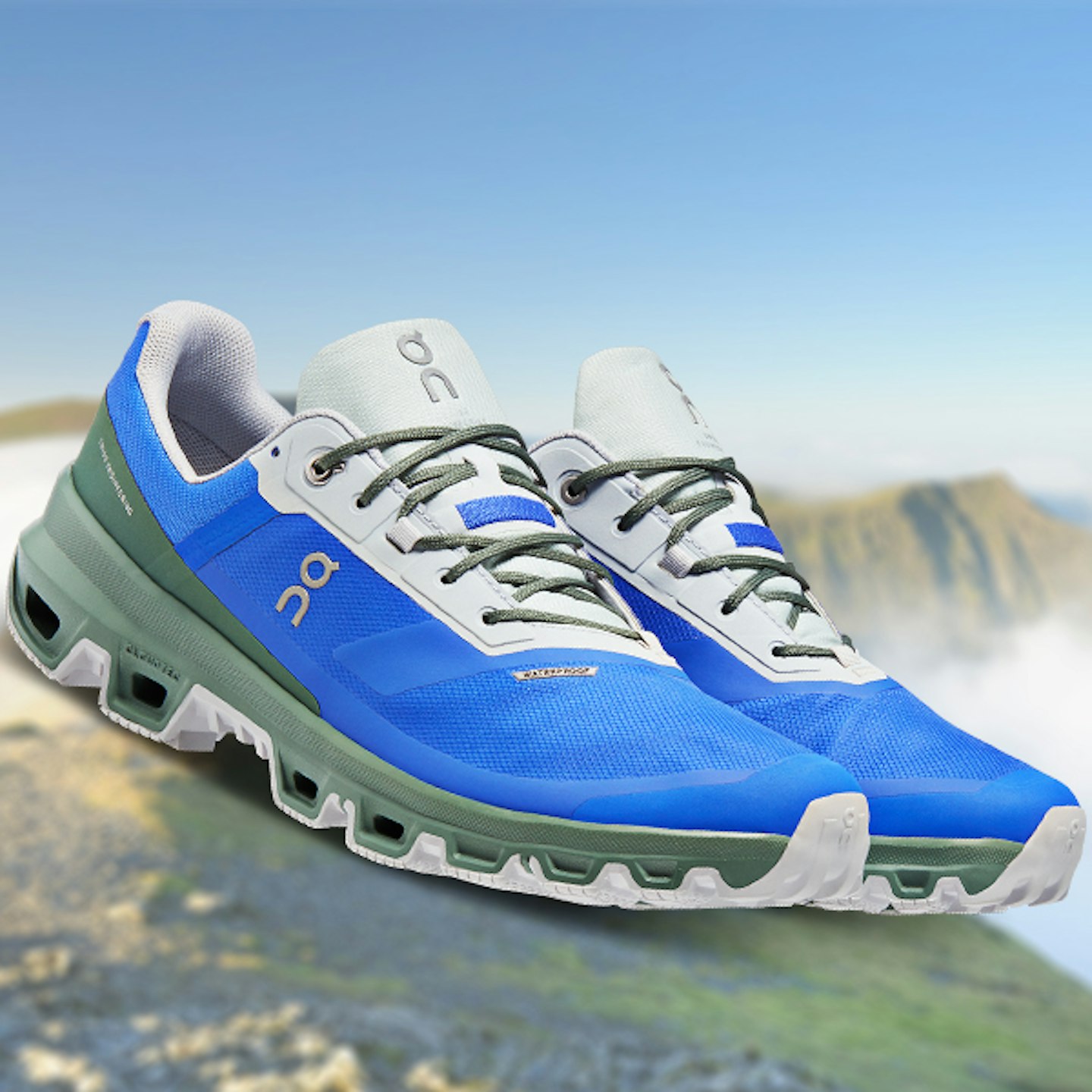
www.on-running.com
With the Cloudventure Waterproof, Swiss brand On has engineered a shoe with a unique, eye-catching outsole. Hollow pods, known as 'clouds', create a deeply-ridged wave of thick, aggressive lugs separated by mini channels, forming a crinkly profile. This so-called CloudTec has a dual purpose: the 'clouds' compress on impact to improve cushioning and then become firmer for an 'explosive' take-off on your next step.
Primarily designed as a trail running shoe, the tech works just as well for hillwalking: the multiple grip patterns of the Missiongrip outsole provide good traction over mixed terrain, and all-round performance is impressive, with a nice balance between protection, comfort, cushioning, rebound and lightness.
Waterproofing is via On's proprietary membrane technology, which worked fine in our tests, but more time is needed to comment on its long-term effectiveness. The fit is slightly tighter and narrower than some other pairs, and we'd describe the construction as a trail running trainer strengthened with a bit of extra armour. The rubberised toe box and heel counter are firm and protective, the upper is durable, and the midsole and rock plate provide rigidity and stability.
Check out the women's version here
Pros
- Stylish look
- Quality waterproof construction
- Clever design for performance
Cons
- Slightly stiff
- Outsole can clog with debris
Best traditional hiking shoe
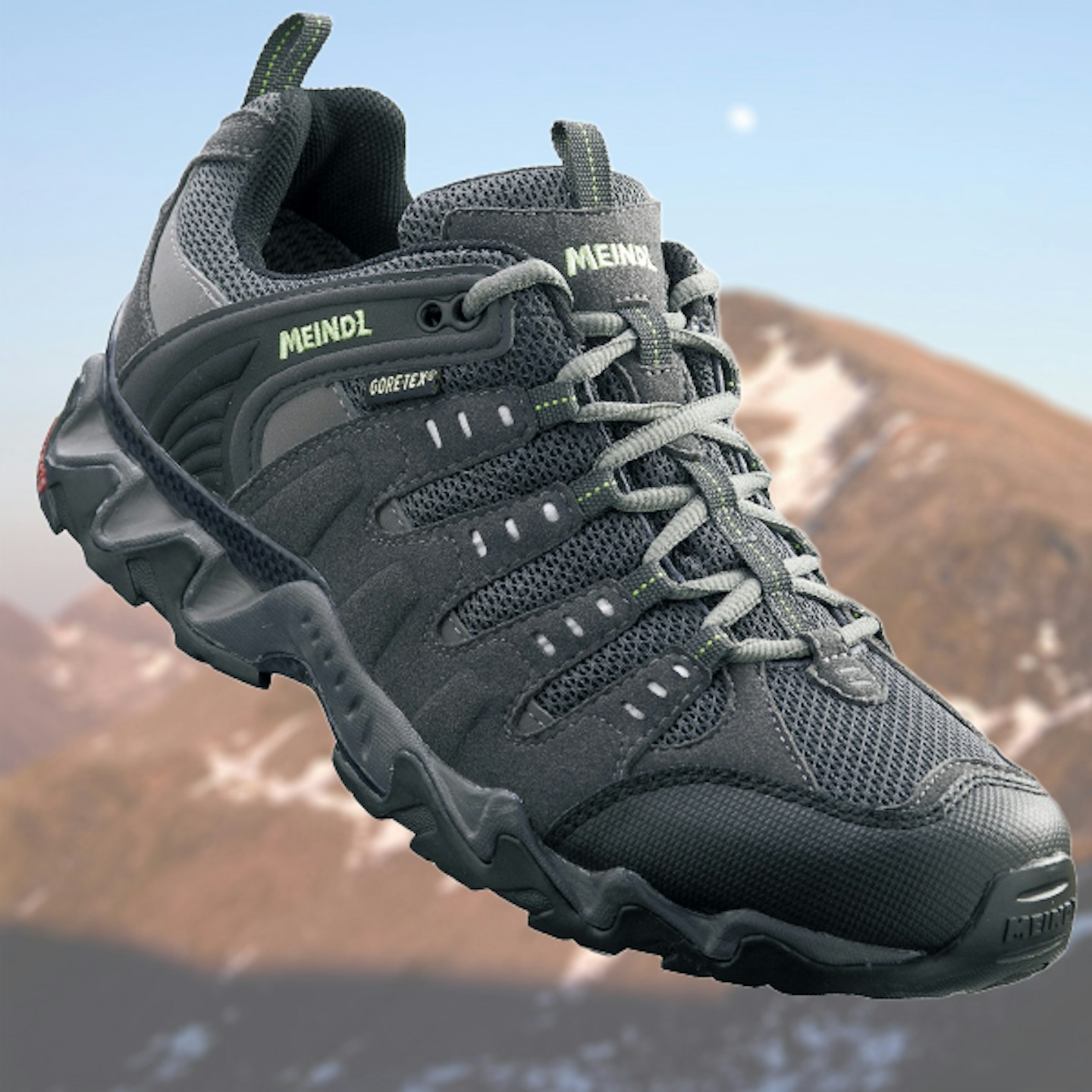
www.cotswoldoutdoor.com
Reviewing this traditional, chunky, leather and waterproof walking shoe side-by-side to the high-tech, ultralight, synthetic and breathable Arc'teryx Norvan LD3 is like comparing apples and pears and evidences the sheer variety in design and style of outdoor footwear these days.
The two approaches are poles apart, but clearly, there is a market for both – with some walkers favouring protection, durability and structure and others enticed by minimalism, comfort and flex.
If you're in the former camp, the Meindl Respond GTX is a good bet. It's one of Meindl's best-selling shoes in the UK. The upper is made from a mix of velour leather and mesh, waterproofing is via a Gore-Tex lining, the rubber toe cap is strong, and the heel cup stabilises the foot securely.
The Contragrip Trail outsole has an interesting design – the lugs aren't particularly deep or pronounced, but overall traction seemed fine in our test walks. The midsole ensures a relatively firm construction, with higher levels of lateral and torsional rigidity than lightweight trail shoes, and the overall build is quite beefy. Some will find all of this reassuringly tough and sturdy, others will find it way too clunky and cumbersome.
Check out the women's version here
Pros
- Strong and stable
- Gore-Tex waterproofing
- Highly protective underfoot
Cons
- Chunky
- Outsole and lugs could be more aggressive
Best for long distances
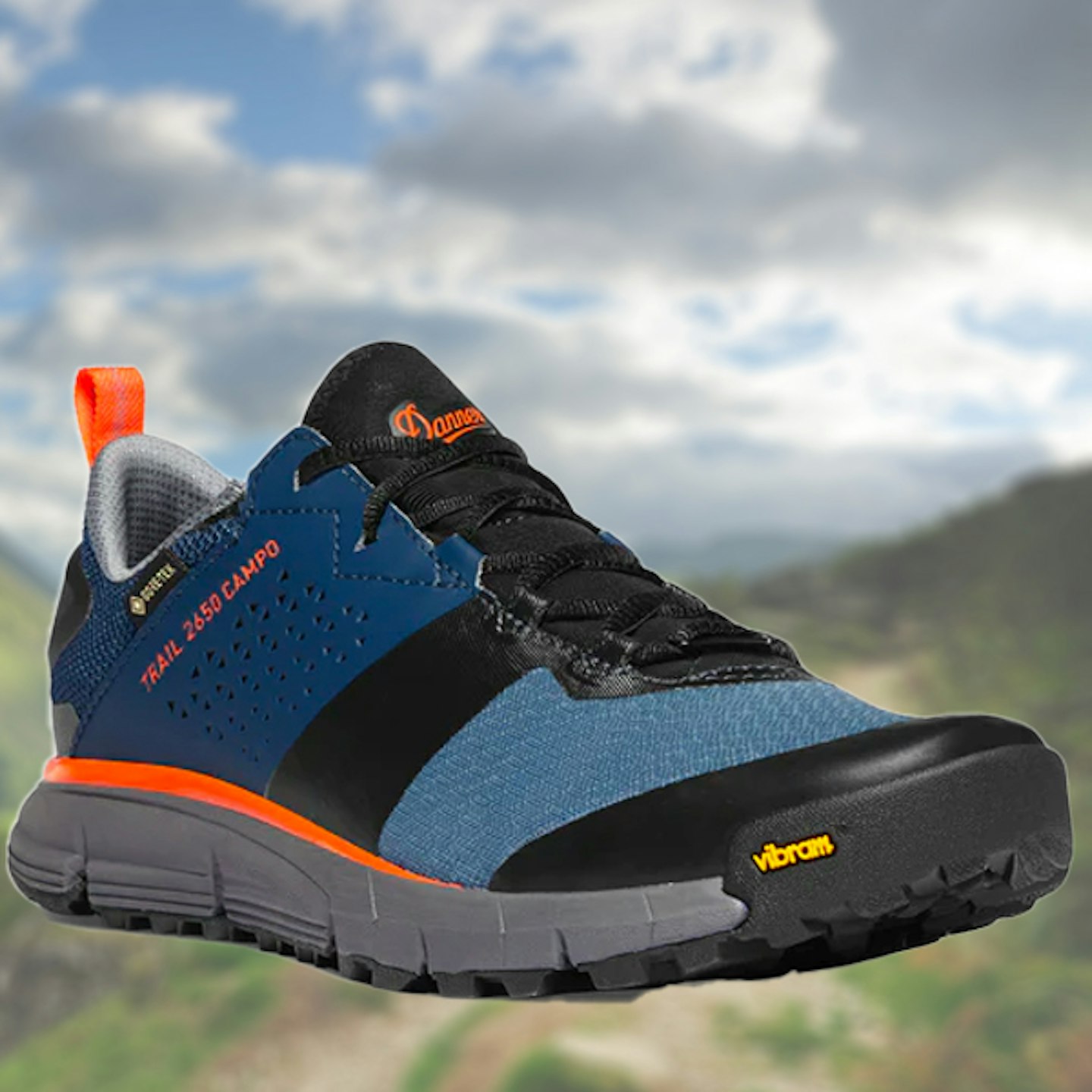
global.danner.com
Named after the 2650-mile Pacific Crest Trail, this shoe is excellent for big mileage day hikes and long-distance, multi-day walks. It's good-looking, faultlessly comfy, adequately protective and – for a walking shoe – generously-springy underfoot. It's also lightweight (330g), thanks to fabric mesh uppers with a central leather panel and thin overlays for added durability.
The midsole is EVA foam rubber, stiffened with a TPU Trailguard shank for a little more stability and protection underfoot. The outsole is definitely built for the trail, with a Vibram 460 Megagrip compound and sharply angled lugs for enhanced traction. In our test hikes around the Lake District, we were impressed by the outsole grip (although it's better suited to dry, hard-packed US trails than the UK's muddy bogfests), the cosy fit of the stretchy sock-like tongue, and the flex of the supple leather and textile upper.
There's no waterproofing in the shoe we tested, but this meant our feet didn't over-heat or get too clammy – and Danner do make a Gore-Tex version for hikers who want waterproofing.
All in all, this shoe achieves a delicate balancing act, striking a near-perfect sweet spot between the two styles of ultralight trail running trainers and more traditional walking shoes. Anyone fancy a 2650-mile hike?
Check out the women's version here
Pros
- Long-distance underfoot comfort
- All-round performance
- Proven design
Cons
- Others offer more foot support
Best trainer-style hiking shoe
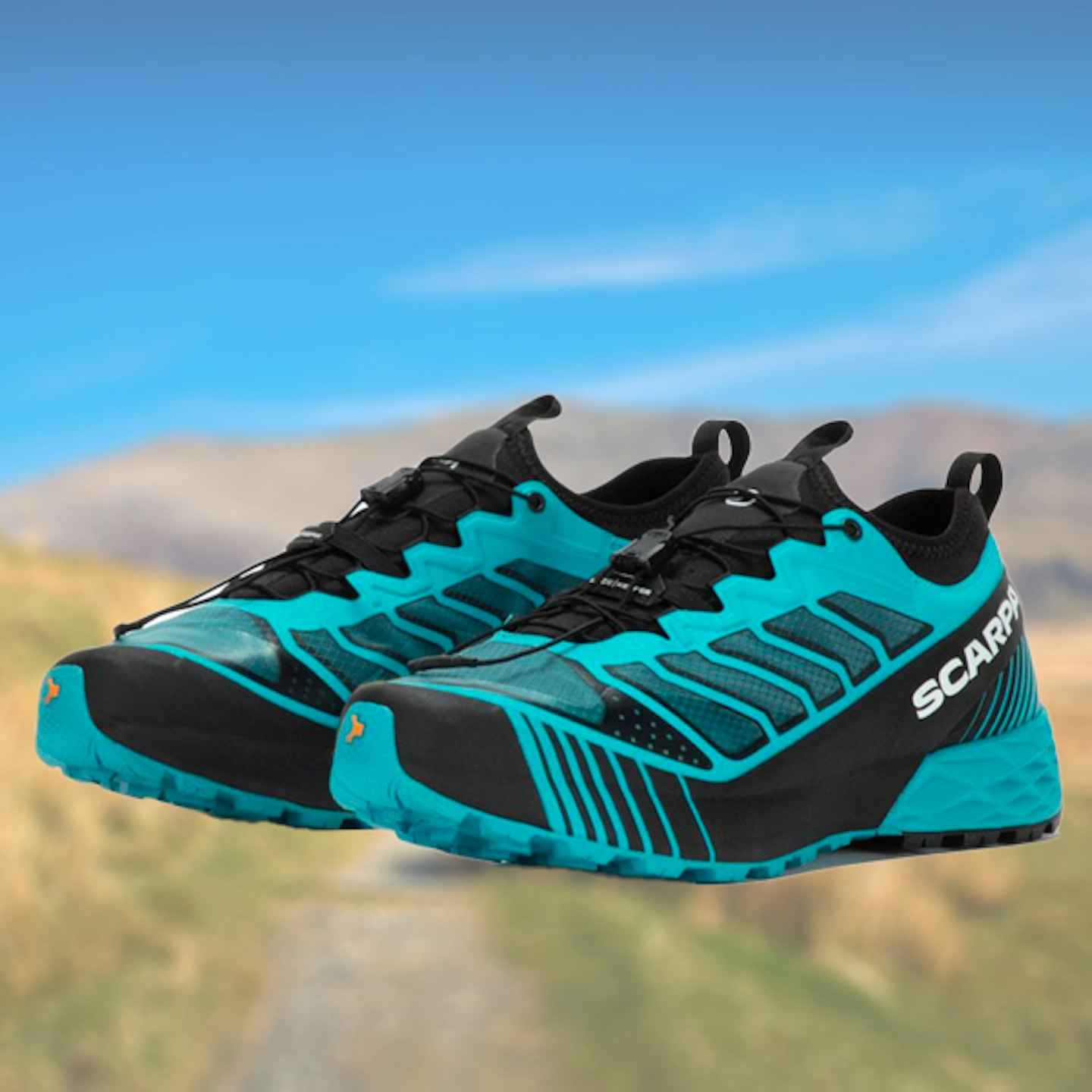
www.sportsshoes.com
The Ribelle Run is a technical trail running shoe, but it works just as well for hiking. It is light, grippy, responsive and comfy – and performs solidly in most areas, as one would expect with a reputable brand like Scarpa.
The fit is true to size, if not slightly on the precise side, with a wraparound design that holds the foot nicely and feels both technical and protective (but not quite as comfy as some others). The minimalist upper features Scarpa's 'sock fit' construction, consisting of a breathable mesh bootie, heat-sealed overlays for added durability, a stretchy integrated gaiter that seals around the ankle, and an effective speed lacing system.
An EVA band that wraps the shoe from the stabilised heel counter to the toe bumper adds a touch of strength to the design. Scarpa's Presa midsole isn't super-bouncy or cushioned but instead prioritises good underfoot feedback, feel and precision. That said, there's enough cushion and energy in this shoe to still feel light, fast and nimble on the trail.
The Presa Supergum outsole has 4mm deep, widely spaced lugs, which deliver good traction over mixed terrain – although they perform better on rock and hard-packed trails than mud or grass. At 314g per shoe, the Ribelle Run is the second lightest shoe on test.
Check out the women's version here
Pros
- Breathable
- Highly responsive
- Great on technical terrain
Cons
- Not very cushioned
- precise fit may not suit everyone
Best for hard-packed trails
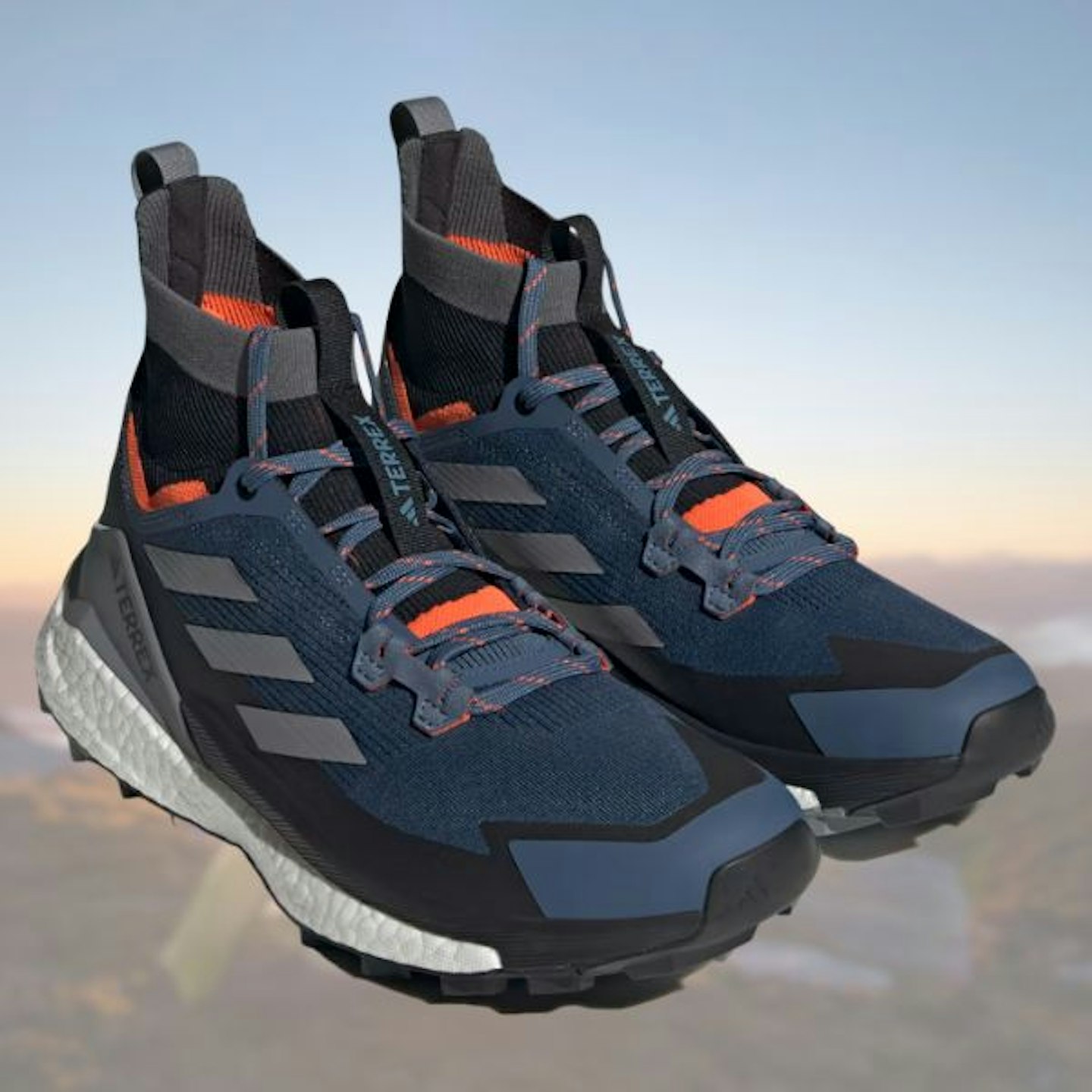
www.adidas.co.uk
Light, agile, and as comfortable as a trainer, these are perfect for gobbling up the miles on long, dry, hard-packed trails.
The look of these shoes may cause a few raised eyebrows – even though such chunky-soled footwear is becoming increasingly popular – simply because they sport the three-striped Adidas logo on a hiking shoe.
But having tested these, it's hard not to love them. The forefoot is luxuriously spacious, the underfoot cushioning provides exceptional comfort, and the lacing and ankle gaiter offers a snug fit that keeps debris on the outside of the boot without reducing flexibility.
There's no waterproof membrane, but this keeps them light and airy.
Check out the women's version here
Pros
- Spacious toebox
- Gaiter keeps out debris
- Breathable
- Very comfy
Cons
- Edgy styling not for everyone
Best for kids
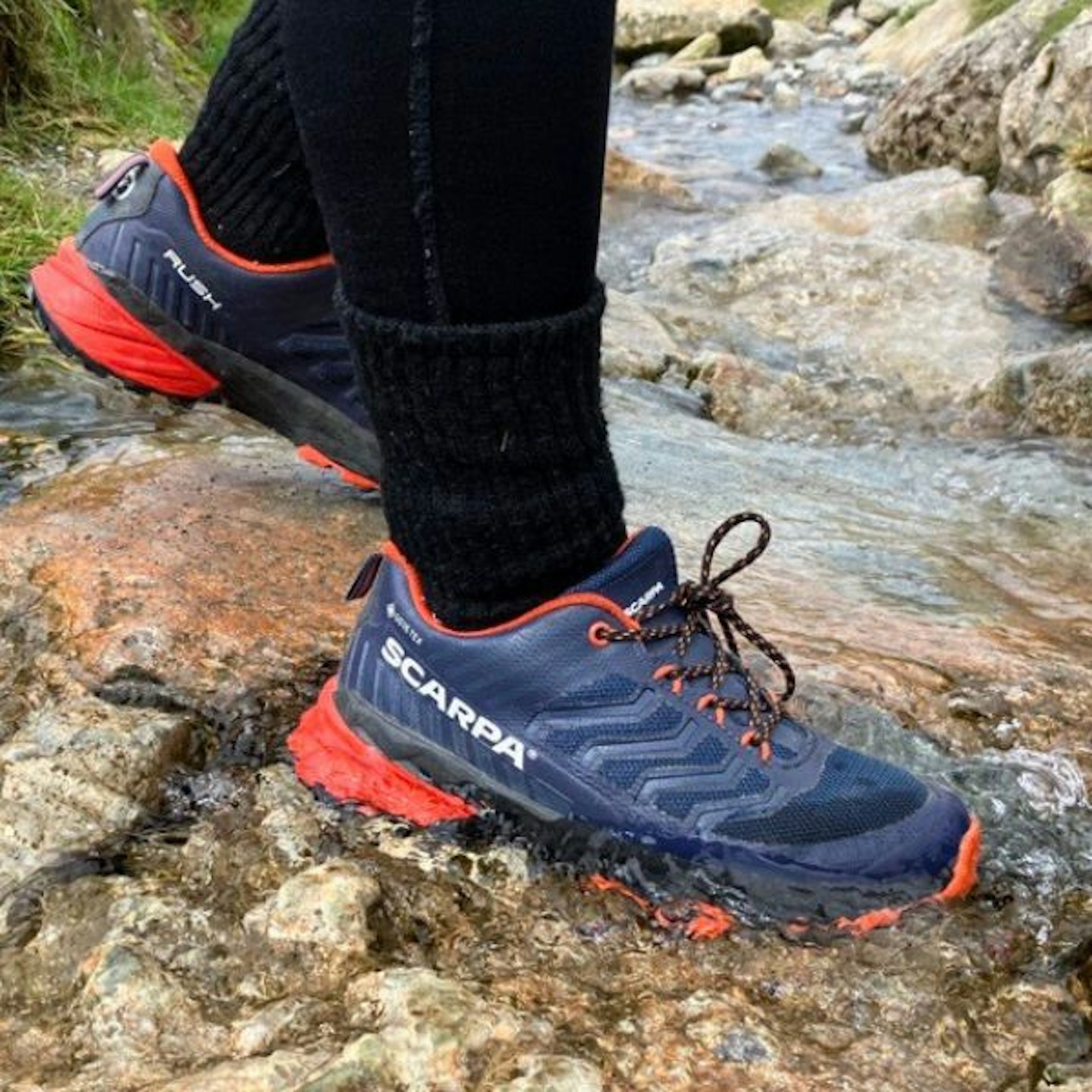 Live For The Outdoors
Live For The Outdoorswww.sportsshoes.com
The quality of Scarpa's footwear will need little introduction to regular hillwalkers because they've been earning accolades from us for many years. But how does the current kids' range shape up?
Our youngest gear tester has recently worn this excellent shoe for adventures on Scafell Pike, Helm Crag, Hallin Fell and Harter Fell, where the Rush GTX has had to handle rocky scrambles, boulder fields, stone steps, bogs, stream crossings and plenty of long, wet grass.
Not only did it do the job fantastically, both shoes still look as good as new. The meshy upper has proved protective enough for 7-year-old feet, as has the hardened internal toe cap when he's clattered it against rocks. The rubbery outsole has provided plenty of grip on everything from dry crags to slippery stepping stones, and the Gore-Tex lining did its job even when fully submerged in Lingmell Gill.
The fact that he's also been using them to cycle and play sport says a lot about how versatile they are too.
Pros
- Comfortable
- Durable
- Grippy
Cons
- They'll outgrow them before they wear out
How to buy the best hiking shoe
Walking shoes vs. trail running trainers: There is a huge variety in hiking footwear now. A current trend is to wear modern trail running trainers for hiking – they can be light, fast and grippy with excellent energy return, thanks to cutting-edge tech. Alternatively, you can go for shoes specifically designed for hiking, which tend to be slightly heavier and less cushioned but with better stability, protection and durability.
Upper: The upper is the exterior material of a walking shoe. Leather uppers (nubuck or suede) are generally stronger and firmer. Synthetic uppers are less durable but will be comfier and lighter, with enhanced flex and breathability.
Fit: Everyone's feet are shaped differently, and what fits comfortably for you might be blister-inducing for someone else. Fit is, therefore, absolutely critical. Even sock thickness affects fit. Your best bet is to try for size in a shop, ideally with a skilled footwear fitter. Aim for a secure, comfy fit without excessive compression or pinching. Space in the toe box for your toes to splay and the right volume at the forefoot are important.
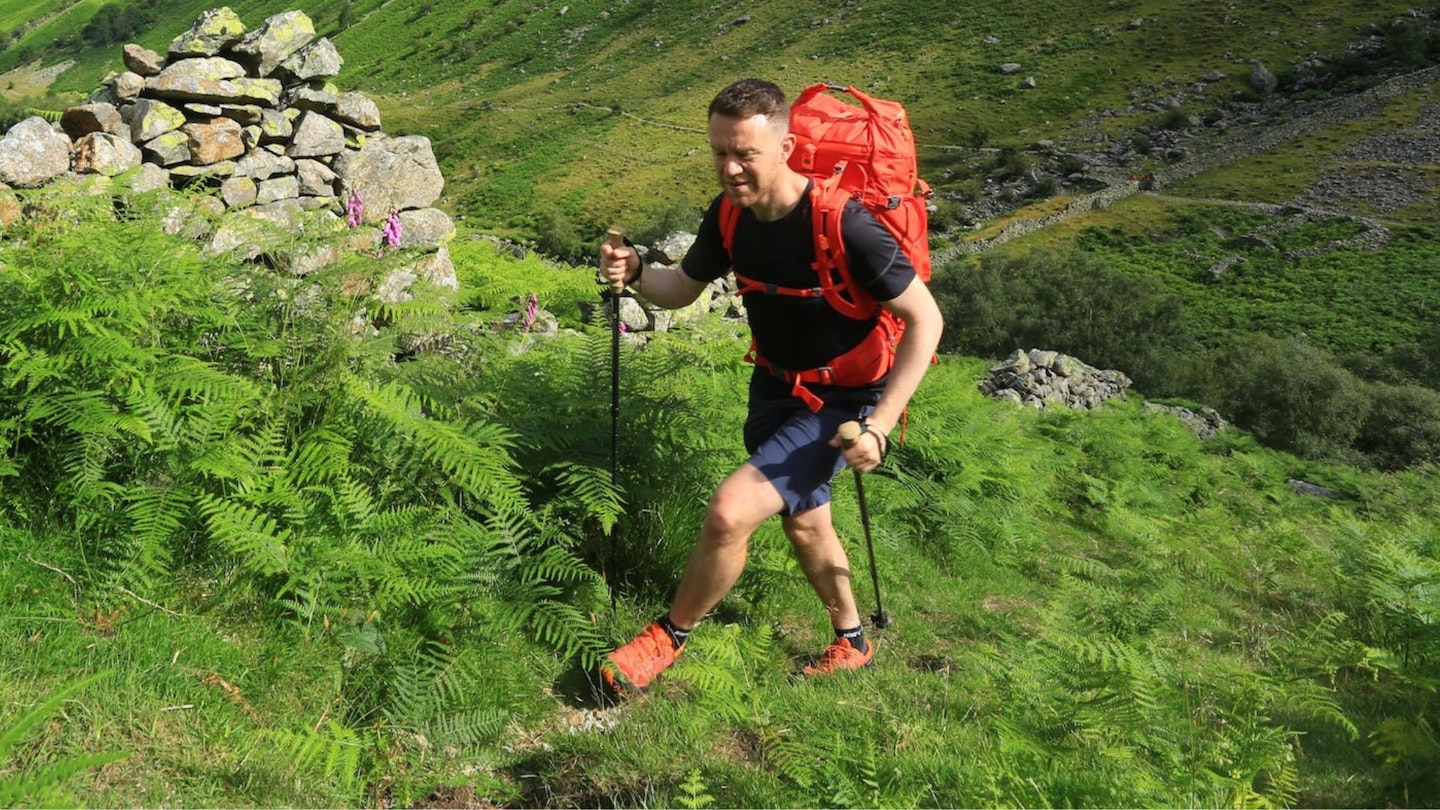
Weight: One of the advantages of shoes is that they're lighter than boots. But a reduction in weight can mean a loss of protection and support, so consider what's important to you. All weights quoted are per individual shoe.
Tongue: A padded tongue will provide improved comfort, while a gusseted or bellows tongue – which is fully attached to the uppers – will provide better protection from water and debris.
Toe bumper: A toe bumper provides additional durability and protection for the front of the foot, particularly on rocky ground.
Heel counter: This is the stiffened cup that encloses the heel, providing protection and support. A firm heel counter helps to lock the foot in place and offers additional stability.
Ankle cuff: Unlike boots, walking shoes have a low cuff around the ankle. Some will be cut a little higher than others, helping to prevent water, mud and debris from entering the shoe, but all walking shoes generally prioritise comfort and flex over ankle support and protection.
Waterproof lining: A waterproof-breathable membrane liner will help keep your feet dry. This is often Gore-Tex or a brand's proprietary technology. But do you really need a waterproof shoe? In spring and summer, a non-waterproof shoe will be far more breathable, quick-drying and ventilated – an approach favoured by many experienced hillwalkers.
Insole: For enhanced comfort and stability, you might prefer to switch out the shoe's supplied insole for a higher quality, specialist insole instead.
Midsole: The midsole – usually made from EVA or PU foam rubber – provides cushioning and stability, and its design will affect how rigid and energetic a shoe feels underfoot. Oversized and mega-cushioned midsoles are currently popular, providing a very springy, forward-propelling sensation as you walk.
Outsole: The outsole provides traction via a tread pattern of rubber cleats and lugs. Different rubber compounds are employed – softer compounds offer better grip, but harder compounds will last longer. In general, deep and widely-spaced lugs will provide improved grip and won't get clogged with mud.
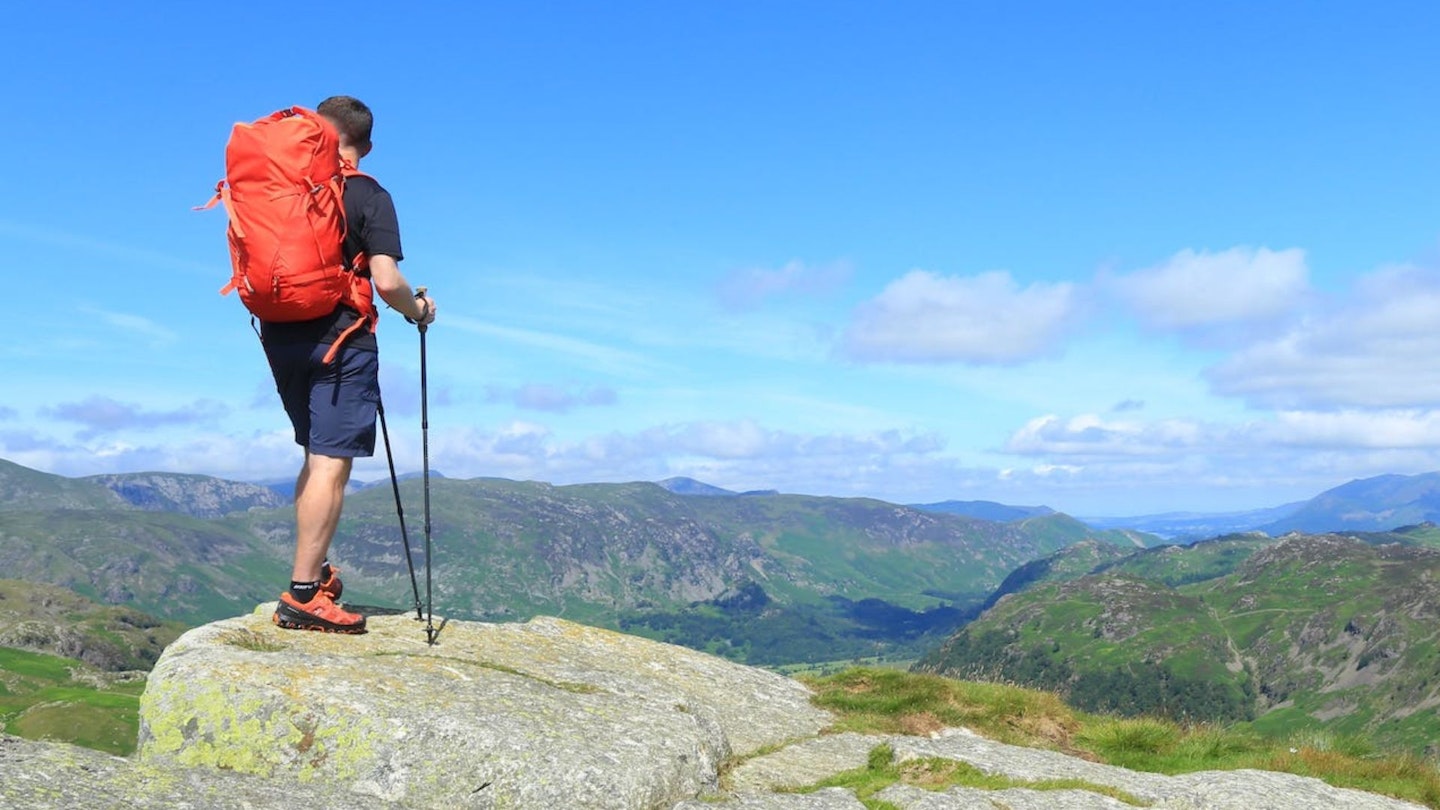
Hiking shoe care and maintenance
Hiking footwear get a hard life, and it's a wonder some of them last as long as they do. In order to keep your hiking shoes (or boots) performing as well as they can for as long as they can, proper cleaning and care is key. Fortunately, it's very easy. Head to our comprehensive guide to find out how to care for your hiking footwear.
How we tested these hiking shoes
Our test footwear are always subject to many miles of walking and hiking in the terrains they're designed to be used for. Our experienced and professional reviewers are thorough and objective, with the aim of finding the best options for our audience.
These hiking shoes were all (except one) rigorously tested by the author, Matt, on testing trips across the UK. The Hoka Ancapa shoe was tested as part of our Gear of the Year trip, which saw James Forrest scuttling around the Lakes in these plush foot pillows.
Get half-price digital OS Maps! Trail and Country Walking magazine members get 50% off an annual subscription to OS Maps for 12 months! Find out more here.
Don't forget to subscribe to the Live For The Outdoors newsletter to get expert advice and outdoor inspiration delivered to your inbox!
Matt Jones is a freelance gear tester for Live For The Outdoors and Trail Magazine. He has walked several long-distance backpacking trails in New Zealand, the USA and throughout the UK.
